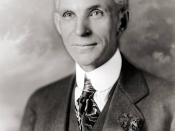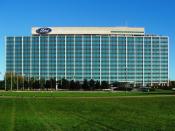Models and Theories of ChangeLDR/515Week2FIVE DIFFERENT MODELS AND THEORIES OF CHANGE. DISCUSSING THE VALIDITY AND UTILITY OF THE MODELS.
I. KURT-LEWIN THEORY OF CHANGE:This theory is also known as the Unfreeze-Change-Refreeze Model of Change. Kurt-Lewin proposed three simple steps to describe the "unfreeze-change-refreeze model. It basically means going from the State A into an unfrozen, change, and then reforming in a different pattern,1.The first step, "unfreeze" involves the process of letting go of certain restrictive attitudes during the initial stages through creating motivation and readiness to accept change.
2.The second step, "change" involves alteration of self-conceptions and ways of thinking through cognitive restructuring.
3.The third step, "refreeze" involves solidifying or crystallizing the changes into a new, permanent form for the individual/ organization by helping the client to integrate the new point of view into the existing corporate agenda .
The practical example, validity and utility of the model:The model's utility is in planned change, for example in a GE manufacturing plant we want to raise production at a particular level, we will conduct a systematic study to analyze what factors are helping towards achieving higher production level and what factors are pushing production down.
After that, a planned effort is made to attain the new level and then stabilize on those levels. Then same process is repeated again. The validity of the method is established because in every new situation equilibrium develops. In the manufacturing field, once a certain level of production level is achieved it stabilizes at that level. Therefore efforts are made in the system for planned change that can be flexible and validated (Edgar H. Schein, 2002) .
II TOTAL QUALITY MANAGEMENT:The Definition:"TQM is a set of systematic activities carried out by the entire organization to effectively and efficiently achieve company objectives so...


